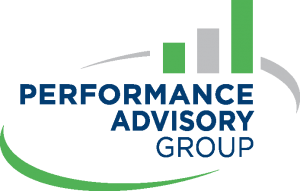Humans are creatures of habit and naturally resist adopting new practices, mindsets, and behaviours. Nobody likes the uncertainty of change. Therefore, embedding behaviour change is a difficult challenge, especially in a professional work environment.
Whenever a company engages my services, the end result is always “Kylie I want my team to change certain behaviours”. In the last 8 years and with over 25 years experience in financial services, I’ve created and implemented new strategies, processes and frameworks for my clients. I’ve found a proven method that enables and encourages lasting change.
Whether I am helping a company to empower its leaders to make a difference and get results, educating teams on building genuine relationships, or embedding a customer conversation framework, I use the same method to ensure new behaviour will stick.
There are five success factors that I consider to be imperative to making behaviour change permanent. In this article, I will explain each of the five success factors that you can use to embed behaviour change within your organisation.
If any one of these five factors is missing, the behaviour change won’t stick and the money you have spent on the initiative will be wasted.
1. Understand and clearly communicate the impact of the behaviour change.
Every team member wants to know what the change means for them. When they hear something new is being implemented, their first thought is usually, “What does this mean for me? Will this make my job harder? Or will it make my job easier?”
This is where empathy and communication are vitally important. You need to understand how they’re feeling and what benefit the behaviour change will have on their ability to do their job. Your people might be concerned that their job will change, or that they won’t even have a job anymore.
Most people’s minds jump to the worst case scenario, so it’s important to remember that people will be apprehensive at first. They’ll have concerns, so the way you communicate the changes should help alleviate any fears or doubts. If you can clearly communicate the benefits of change, your people will start to buy-in to your proposal.
I have developed a three-step framework to help leaders communicate change – Understand, Educate and Reassure.
First, we aim to understand how our people are feeling about the change. We take the time to validate and address their concerns, worries, and fears.
Next, we need to educate them on what it means for them. Will it impact their role? If so, in what way? How will they be supported? We work together to remove all fear and doubts and ensure they understand how the change will benefit them.
Finally, we reassure and reiterate why the change is both important and necessary. The changes aren’t arbitrary, and they’re not designed to make anyone’s life harder. When people can see the big picture and understand why these changes are necessary, they are more likely to support the process and come along the journey.

2. Build an emotional case, not just a rational one.
Often, as leaders, we are good at building rational cases as to how behaviour affects the business. We have our statistics, facts and figures, and think that logic alone will convince people and win their support.
However, in order for people to join us on the journey and support the changes, they need to understand the emotional benefits. Without this important factor, it can feel like just another program being rolled out, or an annoying change to a process or system they are comfortable and familiar with.
People respond more to emotional language and emotional benefits. Therefore, we need to make a conscious effort to appeal to our team’s emotional needs. This can include addressing people’s concerns personally, acknowledging that it means a change to how they’ve been doing things, and expressing that you understand their concerns.
Bringing the emotional, human element to organisational change helps people to be more receptive to change. When we talk about these issues, we are demonstrating that we are listening and that our people are being recognised as an important part of the process (mind you, I think they are the most important part of it, without them there can be no change).
3. The leadership team needs to champion the change.
Employees look up to their leaders as role models. As a leader, you are setting the standard for the rest of your team. Therefore, it’s important that you be the champion of change and conduct yourself in a way that is consistent with the behaviour you want your team to adopt.
Company transformation should always start from the top. Senior leaders should be encouraging the new behaviours and setting an example for their teams. If the people at the top aren’t actively enthusiastic about implementing change, it makes it seem less important.
When I am working on embedding conversations frameworks or coaching cultures within organisations, I make sure that the leaders are a part of the process. They’re not just expecting their team to learn these new frameworks, they’re actively engaged in the process too.
The leaders I work with are getting coached; they are using the conversation frameworks; they are championing the change and demonstrating commitment through their actions. An aligned and committed leadership team is the rock solid foundation that leads to long-lasting change.
4. Bring your people with you.
Change isn’t something that is forced upon your team. It’s not something that you put on their plate and expect it to be done. Meaningful long-lasting change needs to be done with your team, not to your team.
Great leaders don’t just make decisions and decide on strategy, they support their teams to implement those strategies and facilitate the changes. People need to be encouraged and motivated to change by those around them. Sponsors and advocates can be powerful role models to use in this situation.
If you can connect the change with your company’s vision, you can bring your people along with you in your pursuit of your big goal. Your team should understand your vision and how they contribute to actualising that vision, so refer to it when you are communicating the purpose and benefits of the change.
A big part of my work with leaders involves helping them to understand how they can support their teams and bring people along with them. Are there clear role models within the company who can also help champion change? What training resources will teams need to get up to speed? How can you celebrate people that are doing a good job?
Bringing people along with you boils down to one core philosophy – collaboration is key. If you can get your people to buy into your vision, celebrate those who are setting a good example, and communicate the benefits of change, then your team will work with you to implement change.
5. Don’t just roll it out and dust off your hands.
In the classic Kenny Rogers song, ‘The Gambler’, he says “never count your money while you’re sitting at the table.” The analogy refers to getting ahead of yourself at the poker table, but it also applies to implementing change.
I often see businesses declaring victory far too soon, moving onto the next project before the previous one has reached a successful conclusion. Change takes time, so it’s important to stick with each program until change becomes deeply embedded in the company.
We all know how hard it can be to build new habits (and break old ones). Doing something a few times does not make a habit. It only becomes a habit once you do it without thinking. When muscle memory kicks in and the behaviour is second-nature, only then is the behaviour truly embedded.
After you have successfully implemented new systems and processes, you then need to conduct a period of observation and optimisation. Look for new lessons you can learn, pivot when needed, and encourage continuous improvement. Keep spruiking the new methods until it becomes part of your company DNA.
Finally, to enable lasting change, systems, structures, processes and incentives must be aligned and consistent with the goals of the transformation. If you encourage collaboration and equip every part of your business to support new systems and processes, you will create long-lasting change.
PS – Whenever you’re ready, here are FIVE ways I can help you become a better leader…
1. Take my FREE masterclass “3 Steps to Leadership Excellence”
A step-by-step roadmap to guide you from wherever you are now on your leadership journey to becoming a truly world-class leader.
2. Read my book “Empowering Employees Through Effective Delegation”
If you lead a team, you need to master delegation. Learn how to delegate effectively and what to do if it all goes wrong.
3. Book a 15-Minute “Discovery Call”
Develop a personalised leadership development plan that will get you results in the next 6 to 12 weeks and beyond.
4. Want to up your Leadership Game to the next level? Register to our Leadership Development Program
Find out more about our Leadership Excellence Program – Equipping leaders wit the necessary skills to lead high performing teams.
5. Take our 3 minute quiz to discover your Top 10 People Leadership Strengths
Thousands of people have taken our quiz and used their strengths to achieve their goals. Take the quiz today and see what you can achieve.
FREE Resources To Get You Started

Register for our FREE Weekly Leadership Development Webinars
Keep growing, inspiring and leading. Leadership is a journey not a destination, as leaders we should continue to grow ourselves so we can grow others. Join us for our FREE webinars where you'll gain valuable tools, resources and insights. Our workshops are designed for leaders and managers who want to take their leadership to the next level.
Take our FREE People Leadership Quiz
Thousands of people have taken our quiz and used their strengths to achieve their goals. Take the quiz today and see what you can achieve.


Watch our FREE Leadership Masterclass
If you're sick of being pulled from pillar to post every day, frustrated by under performing team members, or struggling with low confidence or imposter syndrome then this new leadership masterclass training is for you. I'll share the 3 most common warning signs and 3 simple fixes and a step by step plan to help you become more confident, trusted and respected leader who delivers results.
